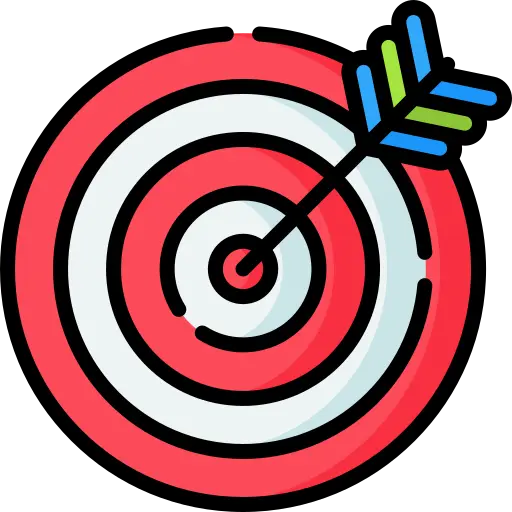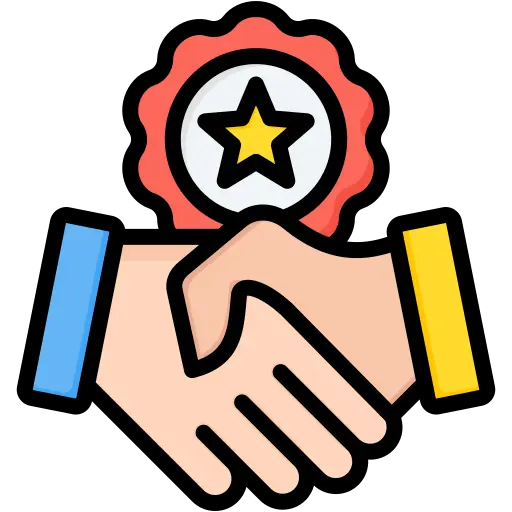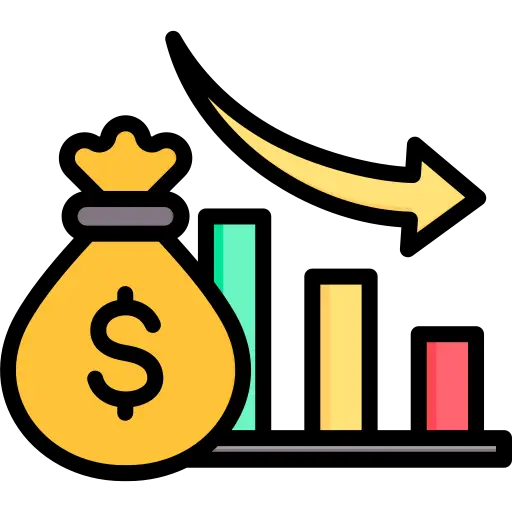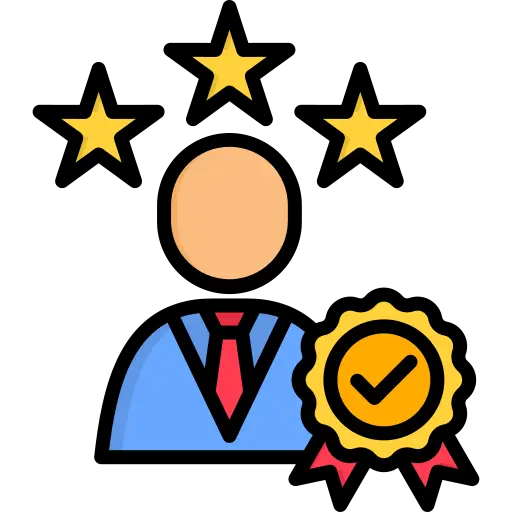Verified Insights
Precision-driven research you can trust. We uphold rigorous data validation processes to ensure every report is reliable and based on credible sources.
+91 9425150513 (Asia) support@24lifesciences.com
MARKET INSIGHTS
Global Neonatal Jaundice Treatment Equipment market size was valued at USD 87.7 million in 2024. The market is projected to reach USD 114 million by 2031, exhibiting a CAGR of 3.9% during the forecast period.
Neonatal jaundice treatment equipment primarily consists of phototherapy devices that utilize special light, distinct from sunlight, to address jaundice in newborns. This treatment aids the baby's liver in breaking down and excreting bilirubin from the blood more efficiently. By maximizing skin exposure to therapeutic light, these devices effectively reduce bilirubin levels, preventing potential complications in infants.
The market is steadily expanding due to rising global birth rates, increased incidence of preterm births, and heightened awareness of early neonatal care. Furthermore, advancements in medical technology and the broader medical devices sector, valued at USD 603 billion in 2023 and growing at a CAGR of 5% over the next six years, are bolstering demand. Healthcare spending, accounting for about 10% of global GDP, continues to rise amid growing needs for advanced diagnostics and treatments. Key drivers include expanding access to neonatal intensive care units and innovations in energy-efficient LED-based systems. Leading players such as GE Healthcare, Natus, and David Medical are enhancing their portfolios through product upgrades and strategic partnerships to meet evolving clinical needs.
Rising Incidence of Neonatal Jaundice Worldwide to Propel Market Expansion
Neonatal jaundice, a common condition affecting newborns, arises from elevated bilirubin levels in the blood, often requiring prompt intervention to prevent complications like kernicterus. This physiological issue impacts approximately 60% of full-term infants and up to 80% of preterm babies, driven by factors such as increasing preterm birth rates, which have risen globally due to improved survival rates in neonatal care. The demand for effective treatment equipment, primarily phototherapy devices that use specific wavelengths of light to break down bilirubin, has surged as healthcare providers prioritize early detection and management. Phototherapy, involving exposure of the infant's skin to blue light, facilitates the liver's processing and excretion of bilirubin, making it a cornerstone therapy. With global birth rates remaining high, particularly in developing regions where jaundice prevalence can exceed 70% in some populations, the need for reliable equipment intensifies. Furthermore, heightened awareness among parents and clinicians about the risks of untreated jaundice has led to more frequent screenings and treatments, boosting equipment adoption in hospitals and clinics.
Moreover, the expansion of neonatal intensive care units (NICUs) worldwide plays a pivotal role. In 2023, the global medical devices market reached US$ 603 billion, with neonatal care segments growing steadily due to investments in advanced infrastructure. This growth aligns with rising healthcare expenditures, which account for about 10% of global GDP, fueled by aging populations and chronic disease management needs. In the context of neonatal jaundice treatment, equipment like LED-based phototherapy units offers advantages over traditional fluorescent lights, including lower energy consumption and reduced heat exposure for delicate infants. For instance, the shift towards LED technology has been notable, as these devices provide precise spectrum control, enhancing treatment efficacy while minimizing side effects. Such innovations are particularly vital in resource-limited settings, where portable and cost-effective solutions can significantly improve outcomes. As a result, the market for these devices is projected to grow from US$ 87.7 million in 2024 to US$ 114 million by 2031, reflecting a compound annual growth rate (CAGR) of 3.9%.
Advancements in Phototherapy Technology to Enhance Treatment Accessibility
Technological progress in phototherapy equipment is transforming neonatal care by introducing more efficient, user-friendly devices tailored for jaundice treatment. Traditional blue fluorescent lights have largely given way to LED lights, which dominate the market due to their longevity, with operational lifespans exceeding 20,000 hours compared to 2,000 hours for fluorescents, and their ability to deliver targeted wavelengths around 450-470 nm for optimal bilirubin reduction. This evolution reduces operational costs for healthcare facilities and improves safety, as LEDs generate less heat, lowering the risk of dehydration or burns in infants. Recent developments focus on compact, portable units suitable for home use or outpatient settings, expanding beyond hospitals and clinics segments that currently hold the majority share in applications. Hospitals, for example, account for over 60% of the market, driven by their capacity for intensive monitoring, while clinics and other facilities represent growing opportunities in decentralized care models.
The integration of smart features, such as irradiance monitors and automated dosing systems, further drives adoption by ensuring consistent treatment delivery and reducing human error. In regions like North America and Europe, where regulatory standards are stringent, these advancements comply with safety protocols, encouraging widespread use. Meanwhile, in Asia-Pacific, which includes high-population countries like China and India, rapid urbanization and healthcare infrastructure development are accelerating demand. The segment for LED lights, projected to capture a significant portion of the market by type, benefits from these innovations, as they align with global sustainability goals by consuming up to 80% less power than older models. Overall, these technological strides not only improve clinical outcomes but also support the market's steady growth trajectory amid increasing neonatal health priorities.
Growing Healthcare Infrastructure in Emerging Markets to Fuel Demand
Emerging markets in Asia, Latin America, and Africa are witnessing substantial investments in healthcare, directly impacting the neonatal jaundice treatment equipment sector. With global healthcare spending on the rise, driven by expanding access to maternal and child health services, the need for specialized equipment like phototherapy units has become more pronounced. In 2024, Asia-Pacific holds a leading position in market share due to its large newborn population over 50% of global births occur in this region and improving NICU facilities. Countries such as India and China are prioritizing neonatal care through government initiatives, leading to increased procurement of treatment devices. This is complemented by a shift towards preventive healthcare, where early jaundice screening using non-invasive transcutaneous bilirubinometers precedes phototherapy, enhancing overall efficiency.
➤ For instance, international health organizations continue to promote guidelines for jaundice management, emphasizing phototherapy as the first-line treatment to reduce hospitalization rates and long-term neurological risks.
Furthermore, partnerships between key manufacturers and local distributors are facilitating market penetration, with companies like GE Healthcare and Natus expanding their footprints. The hospital segment, dominant in these regions, benefits from bulk purchases, while clinics in rural areas adopt portable LED systems for broader reach. As healthcare expenditure grows at a CAGR of around 5% in the broader medical devices arena, the neonatal jaundice equipment market stands to gain, particularly as preterm birth rates linked to higher jaundice incidence stabilize at about 10% globally but require ongoing support.
MARKET CHALLENGES
High Costs of Advanced Phototherapy Equipment to Hinder Widespread Adoption
The neonatal jaundice treatment equipment market, while promising, grapples with significant cost-related barriers that affect accessibility, especially in low-resource settings. Advanced LED phototherapy devices, though superior in performance, can cost several thousand dollars per unit, posing a challenge for underfunded hospitals and clinics in developing countries. Initial acquisition expenses, coupled with maintenance and training requirements, strain budgets where healthcare funding is limited. For example, in parts of Africa and South Asia, where neonatal jaundice affects a high percentage of births, the reliance on donated or outdated fluorescent equipment persists due to these financial constraints. This disparity not only delays treatment but also increases the risk of complications, underscoring the need for cost-reduction strategies.
However, efforts to address this include local manufacturing initiatives that lower import duties and prices. Despite such measures, the overall market growth at 3.9% CAGR reflects cautious expansion, as economic pressures in emerging economies temper demand. Balancing innovation with affordability remains crucial, as high costs could otherwise perpetuate inequalities in neonatal care delivery.
Other Challenges
Regulatory and Compliance Hurdles
Navigating diverse regulatory landscapes across regions presents ongoing difficulties for manufacturers. Stringent approvals from bodies like the FDA in the US or CE marking in Europe require extensive testing for safety and efficacy, often delaying product launches by 12-18 months. In contrast, varying standards in Asia and Africa can lead to compliance inconsistencies, raising quality concerns and increasing operational costs for global players.
Supply Chain Disruptions
Global events, such as pandemics or geopolitical tensions, disrupt the supply of critical components like LEDs and optical materials, leading to shortages. This volatility affects production timelines and raises prices, challenging manufacturers like David Medical and Yiheng Instrument to maintain steady supply amid fluctuating demand from high-volume hospital segments.
Limited Awareness and Access in Rural Areas to Restrict Market Penetration
Despite the proven efficacy of phototherapy in treating neonatal jaundice, limited awareness among healthcare providers and families in rural and underserved areas acts as a key restraint. In many low-income regions, traditional remedies or delayed medical consultations prevail, reducing the utilization of specialized equipment. This is particularly evident where clinics and other non-hospital settings, which could benefit from portable devices, lack the infrastructure or trained staff to implement treatments effectively. As a result, the market's potential remains untapped, with applications outside major hospitals comprising less than 40% of current usage.
Additionally, uneven distribution of healthcare resources exacerbates this issue. While urban centers in North America and Europe boast advanced NICUs equipped with modern LED systems, rural Asia and Africa face shortages, contributing to higher morbidity rates from untreated jaundice. Addressing this requires targeted education campaigns and subsidized programs, but progress is slow, constraining overall market expansion to a modest 3.9% CAGR through 2031.
Competition from Alternative and Traditional Therapies
Alternative treatments, including exchange transfusions or herbal interventions in some cultures, pose competitive pressures on phototherapy equipment. Although phototherapy is the gold standard, recommended for mild to moderate cases due to its non-invasive nature, misconceptions about side effects or preferences for quicker fixes can deter adoption. In resource-scarce environments, where equipment maintenance is challenging, simpler methods gain traction, limiting the growth of segments like blue fluorescent lights, which still hold a niche despite LED dominance.
Furthermore, the slower pace of insurance coverage for neonatal devices in certain markets adds to the restraint. With global healthcare spending at 10% of GDP, prioritization often favors acute adult care over preventive neonatal interventions, slowing equipment sales in clinics and other settings.
MARKET OPPORTUNITIES
Expansion of Telemedicine and Home Care Solutions to Unlock New Avenues
The integration of telemedicine in neonatal care opens promising opportunities for neonatal jaundice treatment equipment, particularly portable phototherapy devices suitable for home use. With rising parental involvement in health management and advancements in remote monitoring, LED units that connect to apps for bilirubin tracking can reduce hospital stays, appealing to cost-conscious systems. This shift is especially relevant in North America, where clinic applications are growing, and in Asia, with its vast population, potentially capturing untapped rural markets.
Rising investments in digital health, part of the broader US$ 603 billion medical devices ecosystem growing at 5% CAGR, support this trend. Key players like Natus and Ibis Medical are innovating with user-friendly designs, positioning the market for accelerated growth beyond the projected US$ 114 million by 2031.
Strategic Partnerships and Regional Expansions by Leading Manufacturers
Strategic collaborations among manufacturers, such as GE Healthcare's alliances with local firms in emerging markets, present lucrative opportunities for market penetration. These partnerships enable customized solutions for regional needs, like durable equipment for high-humidity areas in Southeast Asia, boosting sales in hospital segments that dominate over 60% of revenue.
Additionally, regulatory support for neonatal health initiatives in Europe and the Middle East encourages investments, with opportunities in the 'others' application category for community health programs. As mergers increase, companies like Heal Force and MTTS can leverage economies of scale, driving the 3.9% CAGR through enhanced distribution networks.
Innovations in Energy-Efficient and Portable Devices for Emerging Economies
Innovations focusing on energy-efficient, solar-powered phototherapy units offer substantial opportunities in off-grid regions of Africa and South America, where electricity access limits traditional equipment use. These developments align with sustainability goals and reduce long-term costs, appealing to clinics and other facilities. With preterm births contributing to higher jaundice rates, such portable solutions can address immediate needs, expanding the market beyond current US$ 87.7 million valuation.
Government-backed programs in India and Brazil, emphasizing maternal-child health, further amplify this potential, encouraging R&D investments. As the global neonatal care landscape evolves, these opportunities could elevate the LED lights segment, fostering inclusive growth across diverse applications and regions.
The global Neonatal Jaundice Treatment Equipment market was valued at US$ 87.7 million in 2024 and is projected to reach US$ 114 million by 2031, growing at a compound annual growth rate (CAGR) of 3.9% during the forecast period. Neonatal jaundice, a common condition in newborns characterized by elevated bilirubin levels, is primarily treated using phototherapy equipment, which employs specific wavelengths of light to facilitate bilirubin breakdown and excretion without the risks associated with sunlight exposure. This equipment plays a critical role in neonatal care, preventing complications such as kernicterus. The broader medical devices market, estimated at US$ 603 billion in 2023, is expanding at a CAGR of 5% over the next six years, driven by rising healthcare demands from aging populations, chronic diseases, and advancements in technology. Factors propelling the neonatal jaundice treatment segment include increased birth rates in emerging markets, heightened awareness of early intervention, and innovations in portable and efficient devices. However, challenges such as high costs and access issues in low-resource settings persist, alongside opportunities in energy-efficient lighting solutions.
LED Lights Segment Dominates the Market Due to Enhanced Energy Efficiency and Precise Wavelength Control in Phototherapy
The market is segmented based on type into:
Blue Fluorescent Lights
LED Lights
LED lights have gained prominence in neonatal jaundice treatment equipment owing to their superior performance in delivering targeted blue light spectrum, which effectively isomerizes bilirubin for easier elimination from the infant's bloodstream. These devices offer advantages like lower heat emission, reducing the risk of dehydration or overheating in newborns during prolonged sessions, and longer operational lifespan compared to traditional fluorescent options. Blue fluorescent lights, while still in use for their cost-effectiveness, are gradually being phased out in favor of LEDs due to higher energy consumption and shorter durability. The shift toward LED technology aligns with global sustainability goals in healthcare and supports the integration of phototherapy into home-care settings for milder cases, enhancing accessibility and compliance.
Hospital Segment Leads Due to High-Volume Neonatal Care and Advanced Infrastructure Requirements
The market is segmented based on application into:
Hospital
Clinic
Others
Hospitals dominate the application landscape for neonatal jaundice treatment equipment, as they handle the majority of severe cases requiring intensive phototherapy in neonatal intensive care units (NICUs). Equipped with comprehensive monitoring systems, hospitals facilitate precise dosing of light exposure tailored to bilirubin levels, ensuring optimal outcomes for preterm or high-risk infants. Clinics, particularly outpatient facilities, are increasingly adopting compact devices for follow-up treatments, bridging the gap between hospital discharge and home-based care. The "Others" category encompasses emerging uses in home healthcare and ambulatory services, driven by portable innovations that empower parents to manage mild jaundice under medical guidance, thereby reducing hospital readmissions and alleviating pressure on overburdened systems.
David Medical
Yiheng Instrument
Heal Force Bio-meditech Holdings
Boke Disinfection Equipment
GE Healthcare
Natus
Ibis Medical
MTTS
WEYER
These key players are pivotal in shaping the competitive dynamics of the neonatal jaundice treatment equipment market through innovations in device design, such as integrating digital controls for irradiance monitoring and expanding distribution networks in developing regions to address unmet needs in neonatal health.
Companies Strive to Strengthen their Product Portfolio to Sustain Competition
The competitive landscape of the Neonatal Jaundice Treatment Equipment market is semi-consolidated, featuring a mix of large multinational corporations, mid-sized regional players, and smaller innovative firms. This dynamic environment drives continuous innovation in phototherapy devices, which are essential for treating neonatal jaundice through targeted light exposure that helps break down bilirubin in newborns' blood. GE Healthcare stands out as a leading player, bolstered by its comprehensive product portfolio including advanced LED-based phototherapy units and extensive global footprint spanning North America, Europe, Asia-Pacific, and emerging markets. The company's dominance is further supported by its integration of digital health solutions, enhancing treatment efficiency in neonatal care settings.
Natus Medical Incorporated and David Medical also commanded a significant market share in 2024, with estimates indicating they collectively accounted for over 25% of global revenues. Their growth stems from robust innovation in portable and home-use phototherapy systems, catering to the rising demand for accessible neonatal treatments amid increasing birth rates in developing regions. Furthermore, these firms benefit from strong ties to hospital networks and pediatric research institutions, which amplify their reach and adoption rates.
Additionally, ongoing growth initiatives such as geographical expansions into high-potential markets like Asia and Latin America, coupled with new product launches focused on energy-efficient LED lights, are poised to substantially elevate their market shares through the projected period ending in 2031. For instance, the shift toward LED technology, which offers precise wavelengths and reduced heat exposure compared to traditional fluorescent lights, aligns with global trends toward safer, more cost-effective medical devices. This evolution not only addresses clinical needs but also responds to regulatory pressures for eco-friendly healthcare equipment.
Meanwhile, Heal Force Bio-meditech Holdings and Ibis Medical are bolstering their positions through substantial R&D investments, strategic partnerships with local distributors, and expansions into integrated neonatal care solutions. These efforts ensure sustained growth amid challenges like supply chain disruptions and varying reimbursement policies across regions. However, the competitive intensity encourages collaborations, such as joint ventures for technology transfer, which help smaller players like Yiheng Instrument scale up production and enter new therapeutic segments. Overall, the market's projected growth at a CAGR of 3.9% from 2024 to 2031 reaching US$114 million reflects how these strategies are reshaping the landscape, fostering resilience in a sector vital to global infant health.
In this context, the broader medical devices industry, valued at US$603 billion in 2023 and expanding at a 5% CAGR, underscores the importance of neonatal jaundice equipment as a niche yet critical component. While larger players leverage economies of scale, mid-tier companies differentiate through specialized innovations, creating a balanced ecosystem where competition spurs advancements in treatment efficacy and patient outcomes.
GE Healthcare (U.S.)
Natus Medical Incorporated (U.S.)
David Medical (China)
Yiheng Instrument (China)
Heal Force Bio-meditech Holdings (China)
Ibis Medical (India)
Boke Disinfection Equipment (China)
MTTS (U.S.)
WEYER (Germany)
Advancements in LED-based phototherapy equipment have transformed the treatment landscape for neonatal jaundice, offering superior efficiency and safety compared to traditional fluorescent lights. These devices emit targeted wavelengths that accelerate bilirubin breakdown in newborns' blood without the excessive heat generated by older technologies. Recent innovations include compact, portable LED units that allow for easier integration into neonatal intensive care units, reducing treatment times and minimizing side effects like dehydration. Furthermore, the integration of smart sensors for real-time monitoring of light intensity and baby positioning has enhanced clinical outcomes, making these systems more reliable. With the global neonatal jaundice treatment equipment market valued at $87.7 million in 2024 and projected to reach $114 million by 2031 at a CAGR of 3.9%, this shift underscores the growing preference for energy-efficient solutions that align with rising healthcare demands.
Increasing Adoption of Home-Based Treatment Options
The rising interest in home-based neonatal care has boosted demand for user-friendly phototherapy devices, enabling parents to manage mild jaundice cases outside hospital settings while ensuring medical oversight. This trend is particularly evident in developed regions where early discharge protocols are common, supported by devices featuring adjustable light exposure and remote connectivity for pediatric consultations. However, while this expands access, it also highlights the need for standardized training to prevent misuse. As global healthcare spending accounts for about 10% of GDP and continues to climb due to aging populations and chronic disease prevalence, such innovations in neonatal jaundice treatment are pivotal in easing the burden on overstretched medical facilities.
The expansion of neonatal care infrastructure in emerging markets is propelling the utilization of jaundice treatment equipment, driven by higher birth rates and improved maternal health programs. In regions like Asia and Africa, where neonatal jaundice affects up to 60% of newborns in some areas, governments are investing in affordable LED systems for clinics and hospitals to combat complications like kernicterus. Increased R&D efforts focus on cost-effective designs tailored to resource-limited settings, including solar-powered options for remote areas. Collaborative initiatives between manufacturers and health organizations are fostering awareness about early detection through heel-prick tests, further amplifying market penetration. Meanwhile, the broader medical devices sector, valued at $603 billion in 2023 with a projected CAGR of 5% over the next six years, reflects how these trends in neonatal equipment contribute to overall healthcare advancements, emphasizing preventive care and equitable access.
North America
North America holds a significant position in the Neonatal Jaundice Treatment Equipment market, driven by advanced healthcare infrastructure and a strong emphasis on neonatal care. The region benefits from high awareness levels among healthcare providers and parents regarding early diagnosis and treatment of neonatal jaundice, a common condition affecting up to 60% of full-term newborns. With the global market valued at $87.7 million in 2024 and projected to reach $114 million by 2031 at a CAGR of 3.9%, North America's share is bolstered by substantial investments in medical devices, part of the broader $603 billion global medical devices market growing at 5% CAGR. Leading players like GE Healthcare and Natus dominate here, offering innovative LED-based phototherapy systems that provide precise light exposure to break down bilirubin without the heat issues of traditional blue fluorescent lights. Regulatory bodies such as the FDA ensure stringent safety standards, promoting the adoption of energy-efficient and portable equipment in hospitals and clinics. Furthermore, rising birth rates and an aging population's indirect impact on healthcare spending accounting for about 10% of global GDP fuel demand. However, challenges include high equipment costs, which may limit access in rural areas. Overall, the focus on technological advancements and preventive care positions North America for steady growth, with a shift toward integrated neonatal intensive care units (NICUs) enhancing equipment utilization.
Europe
In Europe, the Neonatal Jaundice Treatment Equipment market is shaped by robust public health systems and a commitment to high-quality maternal and child healthcare. Countries like Germany, France, and the U.K. lead adoption, supported by universal coverage that ensures widespread access to phototherapy devices. The region's market dynamics align with global trends, where phototherapy uses special light to help newborns' livers process bilirubin more effectively, reducing risks of kernicterus. Europe's emphasis on sustainability drives preference for LED lights over older fluorescent types, as they offer lower energy consumption and longer lifespan, aligning with EU directives on medical device efficiency. Key manufacturers such as Heal Force Bio-meditech Holdings supply advanced systems to hospitals and clinics, where the majority of applications occur. While the overall medical devices sector grows amid increasing chronic disease prevalence and geriatric needs, neonatal-specific equipment sees steady demand due to consistent birth rates and proactive screening protocols. Challenges persist in eastern European nations with varying economic capacities, potentially slowing uniform adoption. Nonetheless, ongoing research into fiberoptic and intensive phototherapy innovations fosters market expansion. Europe's collaborative regulatory framework, including CE marking, ensures safety and interoperability, making it a hub for quality-driven growth in this niche segment.
Asia-Pacific
Asia-Pacific emerges as a powerhouse in the Neonatal Jaundice Treatment Equipment market, accounting for the largest regional share due to its vast population and high neonatal jaundice incidence rates, particularly in countries like China and India. With urbanization accelerating healthcare access, demand for phototherapy equipment surges in expanding hospital networks and clinics. The global market's 3.9% CAGR reflects this region's influence, as birth volumes over 50% of the world's total necessitate scalable solutions like portable LED units from players such as David Medical and Yiheng Instrument. Traditional blue fluorescent lights still prevail in cost-sensitive settings, but a clear shift toward LEDs is evident, driven by their effectiveness in maximizing skin exposure to therapeutic light wavelengths. Government initiatives, including India's National Health Mission and China's healthcare reforms, invest in neonatal care infrastructure, addressing challenges like rural-urban disparities. However, supply chain disruptions and varying regulatory standards pose obstacles. The broader medical devices market's 5% growth supports this, fueled by rising infectious diseases and early diagnosis awareness. As economies mature, Asia-Pacific's focus on affordable, durable equipment promises robust long-term potential, balancing volume-driven consumption with quality improvements.
South America
South America's Neonatal Jaundice Treatment Equipment market is in a growth phase, influenced by improving healthcare systems in nations like Brazil and Argentina, yet constrained by economic fluctuations. Neonatal jaundice treatment remains crucial here, where phototherapy devices help manage bilirubin levels through controlled light exposure, preventing severe complications in vulnerable newborns. Regional adoption leans toward hospital settings, with clinics and home-use options gaining traction amid efforts to decentralize care. Global trends, including the $87.7 million market valuation in 2024, underscore opportunities as healthcare spending rises, though at a slower pace than in developed regions. Local suppliers and international firms like Ibis Medical introduce cost-effective LED systems, replacing outdated fluorescent ones to meet growing demands from increasing birth rates and better awareness. Challenges include import dependencies, currency volatility, and limited regulatory enforcement, which can delay equipment upgrades. Nevertheless, public-private partnerships and initiatives targeting maternal health are expanding NICU capacities, fostering market penetration. While the overall medical devices sector benefits from emerging market dynamics, focused investments in neonatal tech could accelerate adoption, offering suppliers a pathway to tap into underserved populations with sustainable solutions.
Middle East & Africa
The Middle East and Africa represent an emerging frontier for the Neonatal Jaundice Treatment Equipment market, characterized by uneven development but promising expansion through healthcare modernization efforts. In countries like Saudi Arabia, UAE, and Turkey, investments in advanced facilities drive demand for phototherapy equipment, essential for treating jaundice via light therapy that aids bilirubin excretion. The region's market aligns with global projections of reaching $114 million by 2031, supported by rising expatriate populations and tourism-related healthcare needs. LED lights are increasingly favored for their portability and efficacy in resource-limited clinics and hospitals, with players like MTTS and WEYER providing tailored solutions. However, funding shortages, weak infrastructure in sub-Saharan Africa, and geopolitical issues hinder progress, leading to reliance on donations or basic fluorescent systems. The global medical devices market's growth at 5% CAGR highlights potential, as aging demographics and disease prevalence boost overall spending. Awareness campaigns and WHO collaborations are key drivers, promoting early intervention. Long-term, urban development and oil-funded projects in the Gulf could transform access, creating opportunities for innovative, durable equipment despite current barriers.
This market research report offers a holistic overview of global and regional markets for the forecast period 2025–2032. It presents accurate and actionable insights based on a blend of primary and secondary research.
✅ Market Overview
Global and regional market size (historical & forecast)
Growth trends and value/volume projections
✅ Segmentation Analysis
By product type or category
By application or usage area
By end-user industry
By distribution channel (if applicable)
✅ Regional Insights
North America, Europe, Asia-Pacific, Latin America, Middle East & Africa
Country-level data for key markets
✅ Competitive Landscape
Company profiles and market share analysis
Key strategies: M&A, partnerships, expansions
Product portfolio and pricing strategies
✅ Technology & Innovation
Emerging technologies and R&D trends
Automation, digitalization, sustainability initiatives
Impact of AI, IoT, or other disruptors (where applicable)
✅ Market Dynamics
Key drivers supporting market growth
Restraints and potential risk factors
Supply chain trends and challenges
✅ Opportunities & Recommendations
High-growth segments
Investment hotspots
Strategic suggestions for stakeholders
✅ Stakeholder Insights
This report is designed to support strategic decision-making for a wide range of stakeholders, including:
Pharmaceutical and biotech companies
Medical device and diagnostics manufacturers
Healthcare providers and hospital systems
Contract research and manufacturing organizations
Investors, consultants, and policy makers
-> The Global Neonatal Jaundice Treatment Equipment market was valued at USD 87.7 million in 2024 and is expected to reach USD 114 million by 2031.
Which key companies operate in Global Neonatal Jaundice Treatment Equipment Market?
-> Key players include David Medical, Yiheng Instrument, Heal Force Bio-meditech Holdings, Boke Disinfection Equipment, GE Healthcare, Natus, Ibis Medical, MTTS, and WEYER, among others.
-> Key growth drivers include advancements in medical technology, increasing demand for advanced neonatal care services, rising healthcare expenditure, growing prevalence of neonatal jaundice affecting approximately 60% of term and 80% of preterm infants, and heightened awareness of early diagnosis and treatment.
-> Asia-Pacific is the fastest-growing region due to high birth rates and expanding healthcare infrastructure, while North America remains a dominant market.
-> Emerging trends include the shift to energy-efficient LED lights from traditional blue fluorescent lamps, development of portable phototherapy devices for home and clinic use, and integration of IoT for remote monitoring of bilirubin levels.
Our Clients
“The data provided by 24LifeScience was clear, well-organized, and useful for internal strategy planning. It helped us understand the competitive landscape more effectively.”
“We used one of their market overview reports for early-stage feasibility work. It gave us a helpful snapshot of current trends and key players in our therapeutic area.”
“I appreciated the team’s responsiveness and willingness to adjust the scope based on our feedback. The final report was aligned with our expectations and timelines.”
“Their custom report on clinical trial trends was a helpful reference as we explored new indications."
“As someone working on early product planning, I found their therapeutic area briefs quite useful. The information was presented in a way that made it easy to extract key takeaways.”
“We didn’t need anything overly complex—just solid, dependable data. 24LifeScience delivered exactly that, without unnecessary fluff.”
“Their reports gave us a good foundation to start our own market assessment. While we supplemented it with other data, this was a great starting point.”
“I’ve used a few of their reports for academic and grant writing purposes. They’re generally well-cited and reliable for understanding market scope.”
At 24LifeScience, we combine domain expertise with dependable research delivery. What truly differentiates us isn't just what we do — it's how we do it. Our clients trust us because we offer consistency, security, value, and most importantly, insight that drives action.

Precision-driven research you can trust. We uphold rigorous data validation processes to ensure every report is reliable and based on credible sources.

We uphold rigorous data validation processes to ensure every report is reliable, up-to-date, and based on credible sources.

24LifeScience powers research for top firms in 20+ nations.Chosen by leading life sciences companies worldwide.

We offer competitive pricing models that align with your project scope — no hidden charges, no lock-in. Tailored pricing for every scale and need.

8–10+ years of life sciences expertise turned into strategic insights.We don’t just summarize data we contextualize it.

Whether it's a ready-made report or a custom project, we deliver within the promised timeline With real-time updates